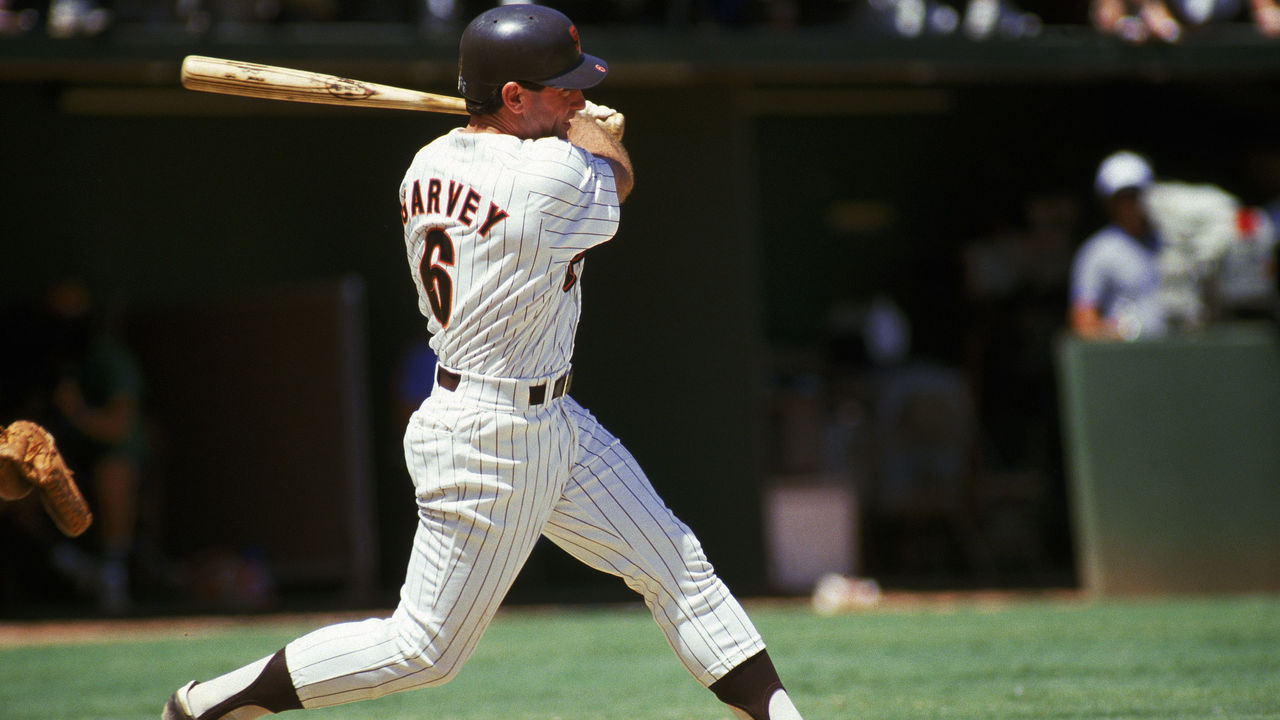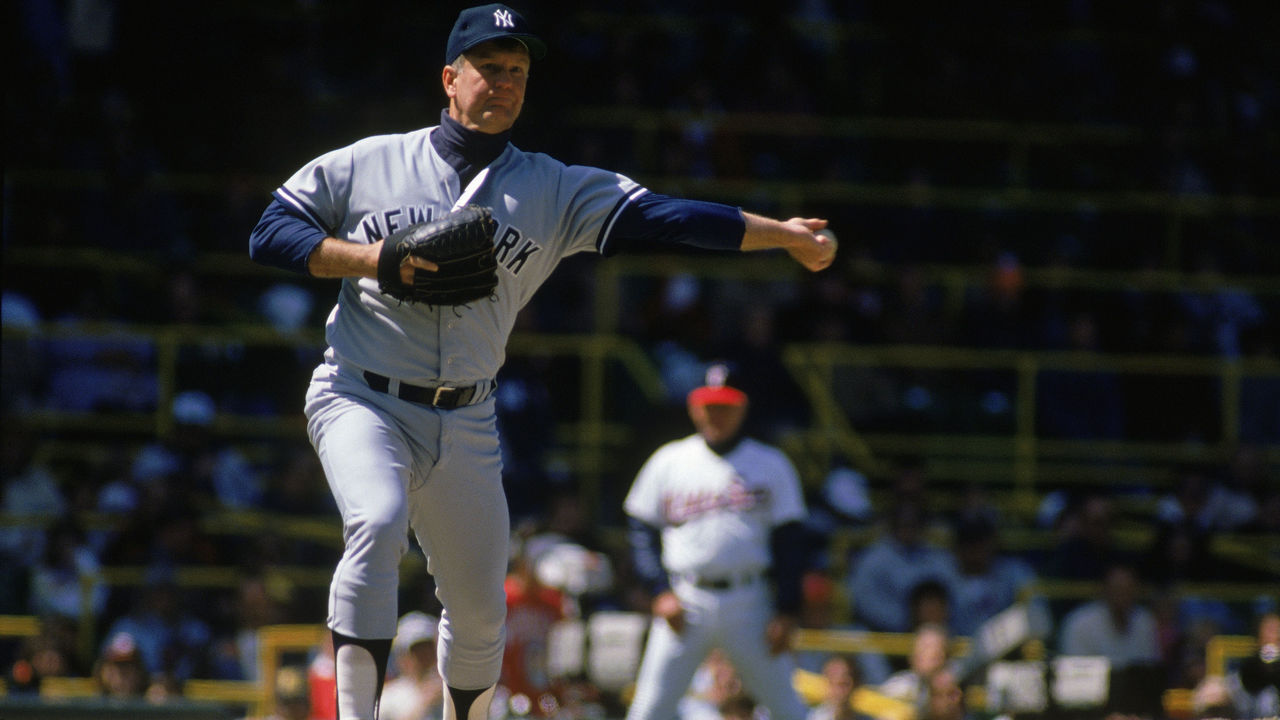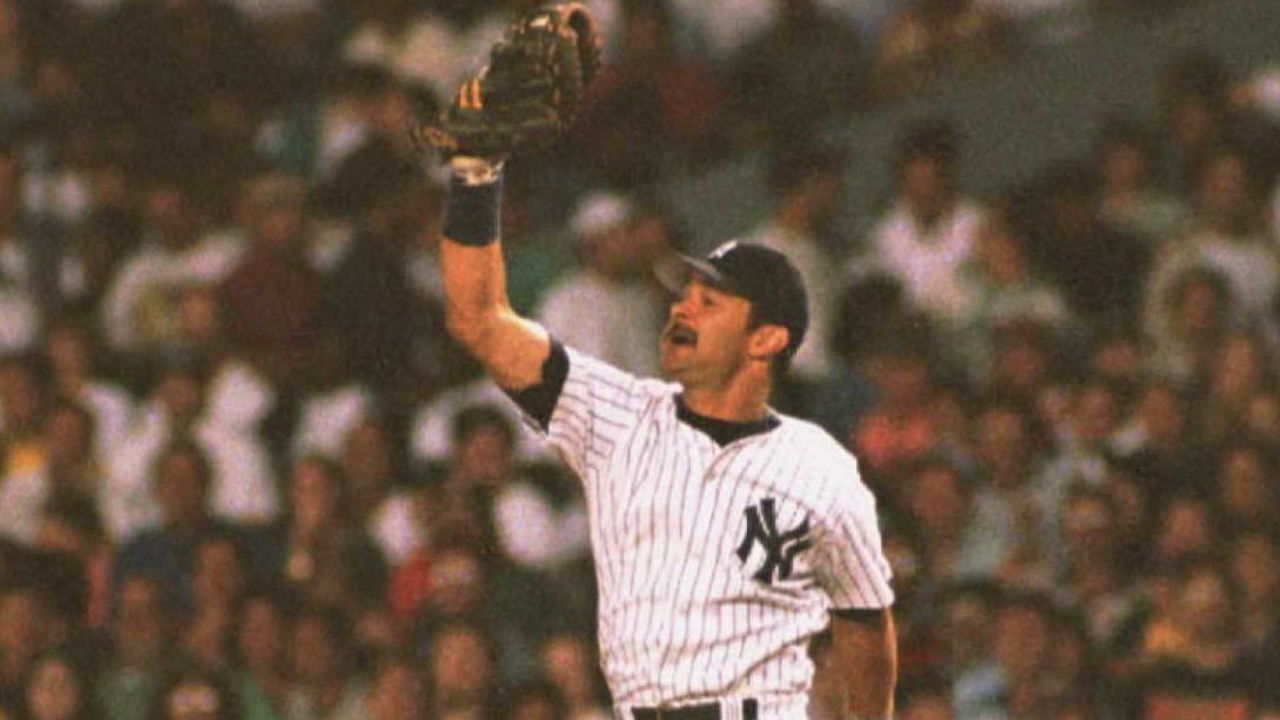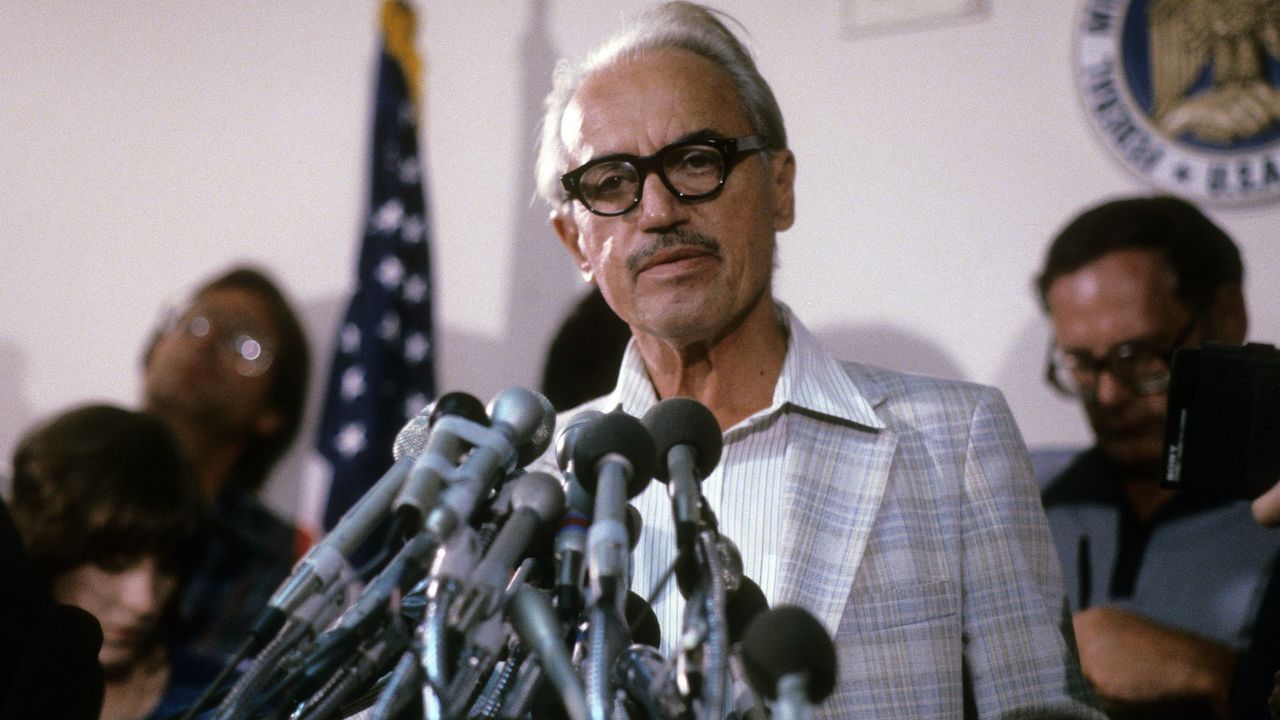Reviewing the 2018 Modern Era Hall of Fame ballot: Part 1
This is Part 1 of a two-part series reviewing this year's Modern Era Hall of Fame ballot. Part 2 will run Saturday.
The Baseball Hall of Fame will announce the first members of its class of 2018 when the results of the Modern Era Ballot are revealed Sunday night. Ten men - nine players and one executive - appear on the ballot, which recognizes players, managers, umpires, and executives who made significant contributions to baseball between 1970 and 1987. Although more than a few worthy players and managers were left off, the final ballot is impressive.
A 16-person committee featuring Hall of Famers, executives, writers, and historians will vote on this ballot; just like in the BBWAA elections, Modern Era candidates need at least 75 percent of the vote to gain induction. The former Veterans Committee has not elected a living player since Bill Mazeroski in 2001.
Today we're reviewing the cases for and against the election of the first five names on the Modern Era ballot. The final five candidates, along with our predictions for election day - who we believe should be elected, and our realistic ballot prediction - will follow Saturday.
Note: These reviews make use of JAWS (Jaffe WAR Score), developed by Hall of Fame historian and author Jay Jaffe, and Bill James' Hall of Fame Monitor to help better evaluate each player's candidacy. Click here for an explanation of JAWS; click here for an explanation of the Hall of Fame Monitor.
Steve Garvey

Position: 1B
Teams: Dodgers, Padres
Years: 1969-87
JAWS: 33.1 (51st)
HOF Monitor: 130
BBWAA ballot high: 42.6 percent of the vote in 1995 (Year 3 of 15)
Key Statistics
| G | BA | OPS | H | HR | RBI | WAR |
|---|---|---|---|---|---|---|
| 2332 | .294 | .775 | 2599 | 272 | 1308 | 37.7 (366th) |
He's in: The 1974 NL MVP was the heart of the Dodgers for over a decade, tallying six 200-hit seasons (twice leading the league), four 100-RBI campaigns, and four Gold Glove Awards. Garvey showed up when it counted, slashing .338/.361/.550 in the playoffs. He's a two-time NLCS MVP (once each with the Dodgers and Padres), played in four World Series, and hit over .400 in the Dodgers' 1981 World Series victory. From 1975-83 Garvey appeared in 1,207 consecutive games, the fourth-longest streak in MLB history and the National League record.
He's out: Counting stats and awards only carry so much weight. Garvey's totals in both WAR and JAWS would be near the bottom of the Hall's first basemen if he were elected; indeed, only three first basemen - Jim Bottomley, George Kelly, and 19th-century pioneer Charlie Comiskey - score lower than Garvey in these categories. His four Gold Gloves suggest an elite defender but his minus-5 Total Zone Runs actually ranks 90th all time at his position. Even by the traditional mark of career batting average, he's well behind the pack.
While Garvey was a big star of his era, there are reasons (both on and perhaps off the field) why he went 0-for-15 on the writers' ballots.
Tommy John

Position: LHP
Teams: Indians, White Sox, Dodgers, Yankees, Angels, Athletics
Years: 1969-89
JAWS: 48.4 (83rd)
HOF Monitor: 112
BBWAA HOF ballot high: 31.7 percent in 2009 (Year 15 of 15)
| W-L | ERA | K | BB | IP | WHIP | WAR |
|---|---|---|---|---|---|---|
| 288-231 | 3.34 | 2245 | 1259 | 4710.1 | 1.283 | 62.3 (48th) |
He's in: John's Cooperstown case is about more than just raw statistics. After suffering a potentially career-ending elbow injury in 1974, John went to Dr. Frank Jobe, who performed a then-radical surgery to reconstruct John's torn ulnar collateral ligament. He missed all of 1975 rehabbing, but pitched another 14 seasons after being the first to undergo what's now known as Tommy John surgery. His willingness to serve as a test case and his post-surgery success changed pitching forever.
On the mound, John's 288 wins are the second-most by a pitcher who failed to win 300 games (he'd likely have 300 if not for the surgery). He made four All-Star teams and was a reliable arm who was critical to the success of three pennant winners. His 26 seasons are tied for the second-longest career ever, and the surgery cost him a record-tying 27th.
He's out: Unfortunately, John's statistical accomplishments don't seem to measure up. He was never a huge strikeout pitcher (John made his money inducing ground balls), but his strikeout numbers tanked post-surgery, topping 100 just three times and averaging 69 a year from 1976-89. He only received Cy Young votes in four seasons, and aside from three years leading the league in shutouts, never made a dent on the leaderboards. When you consider his overall numbers beyond wins and losses, John's longevity ends up working against him.
There may be a place for Tommy John (and Dr. Jobe, for that matter) in Cooperstown based on his critical role in the evolution of pitchers. As a pitcher himself, however, he falls shy of the overall Hall requirements.
Don Mattingly

Position: 1B
Teams: Yankees
Years: 1982-95
JAWS: 38.9 (38th)
HOF Monitor: 134
BBWAA HOF ballot high: 28.2 percent in 2001 (Year 1 of 15)
| G | BA | OPS | H | HR | RBI | WAR |
|---|---|---|---|---|---|---|
| 1785 | .307 | .830 | 2153 | 222 | 1099 | 42.2 (T-288th) |
He's in: Mattingly was perhaps the unluckiest Yankee, debuting a year after their 1981 pennant and retiring due to back issues at age 34, a year before the first "Core Four" title. In between, he was the lone Yankees star in the franchise's 15-year dry spell, winning AL MVP in 1985 with a fantastic all-around season. His nine Gold Gloves are second-most among first basemen, trailing only Keith Hernandez (11). Over his six-year peak from 1984-89, Mattingly averaged over 203 hits, 27 homers, and 43 doubles per season. He hit .417 in his lone playoff appearance, the Yankees' 1995 ALDS loss to Seattle.
He's out: Donnie Baseball couldn't sustain his excellent performance. A 147 OPS+ over his six-year peak fell to 105 in his final six seasons from 1990-95, and Mattingly's power was sapped, as he averaged 10 homers a season in that span. Outside of a few more Gold Gloves, those last years really hurt his case.
Though not as far behind the elite as Garvey, Mattingly finished his career well below the standards for Hall of Fame first basemen; names ahead of him by JAWS and WAR not yet in the Hall include Hernandez, Fred McGriff, John Olerud, and Norm Cash. For Mattingly, that plaque in Monument Park will likely stand as his highest career honor, and that's something to be very proud of.
Marvin Miller

Founder and executive director, Major League Baseball Players Association - 1966-83
He's in: All Marvin Miller did was change the entire landscape of how baseball - and by proxy, all of professional sports - operates.
He was elected as the MLBPA's director in 1966 following a long stint as an economist for the United Steelworkers. Within two years, baseball's minimum salary rose from $6,000 to $10,000 as part of a new collective bargaining agreement Miller negotiated between the union and owners - the first CBA in the history of professional sports. Under Miller's watch, outfielder Curt Flood sued MLB in 1970 to challenge baseball's "reserve clause," which had bound players to the team holding their contract for nearly a century. Flood lost, but within five years, Miller had secured players' rights to free agency, and million-dollar contracts quickly followed.
Miller led baseball players through four strikes and two lockouts in the 1970s, brought arbitration and free agency into the sport, and increased the rights and wages of players during his career with the MLBPA. In 1997, the union named its Man of the Year award in Miller's honor.
He's out: In deference to the late Miller's wishes, his family would likely prefer that he not be elected.
Miller's been up for election multiple times with no luck, coming closest in 2011 when he fell one vote shy. He's received vocal support over the years from many Hall of Fame players and even ex-commissioners and owners he once sparred with, including Bud Selig. After being passed over in the 2008 election, he called the entire process a "farce" and actually wrote the Hall to request he be omitted from future ballots. Miller died in 2012 at the age of 95; in 2013, when he was on the ballot again, his daughter Susan told writer Murray Chass that the committee members were "cowards (for) doing it after he died." Her brother Peter Miller said the family wouldn't attend or speak at any Hall of Fame ceremony regardless of the vote results.
The Miller family has every right to boycott, but his absence from Cooperstown is still disgraceful. This needs to be the year the Modern Era committee puts Marvin Miller, one of the most important and influential figures in baseball history, where he belongs: inside the Hall of Fame.
Jack Morris

Position: RHP
Teams: Tigers, Twins, Blue Jays, Indians
Years: 1977-94
JAWS: 38.4 (164th)
HOF Monitor: 122
BBWAA HOF ballot high: 67.7 percent in 2013 (Year 14 of 15)
Key Statistics
| W-L | ERA | K | BB | IP | WHIP | WAR |
|---|---|---|---|---|---|---|
| 254-186 | 3.90 | 2478 | 1390 | 3824.0 | 1.296 | 43.8 (T-139th) |
He's in: Morris, perhaps the most hotly debated Hall of Fame candidate in recent memory, is back. A tenacious workhorse in the DH era, he won at least 10 games in all but four of his 18 seasons, and only the strike-shortened 1981 campaign prevented him from 10 consecutive seasons of 15-plus wins. Morris topped the 200-inning mark 11 times, including 293 2/3 in 1983, the highest total by an AL pitcher since 1980. An ace of World Series championship clubs in Detroit, Minnesota, and Toronto, he won a total of four rings. He also threw a no-hitter in 1984. But Morris is best remembered for his 10-inning shutout in Game 7 of the 1991 World Series, a masterpiece that arguably remains the greatest playoff pitching performance ever.
He's out: If elected, Morris would instantly vault past Red Ruffing (3.80) to own the Hall of Fame's highest ERA at 3.90. Only Ruffing, Ted Lyons, Jesse Haines, and Herb Pennock have been elected with career ERAs above 3.60. Morris' 105 ERA+ would represent the Hall's third-lowest total, only above Rube Marquard - a perennial candidate for the worst pitcher enshrined - and Catfish Hunter. By JAWS, only Hunter, Marquard, and Candy Cummings - the purported inventor of the curveball, who last pitched in 1877 - rank lower. A Game 7 for the ages and 254 wins only help your case so much.
Morris also benefited greatly from run support during his career en route to his high win total, as Jay Jaffe pointed out in "The Cooperstown Casebook" by using the SUP+ statistic. Perhaps that's how the "pitching to the score" myth came about.
Besides Morris, only Gil Hodges has ever received over 60 percent of the BBWAA vote without eventually getting inducted via the Veterans Committee (the forerunner of this ballot). That bodes well for Morris. Combine that factor with a committee that should be sympathetic to his cause and he's likely going in this year - even if the statistics show he doesn't necessarily belong. Deciding not to endorse Morris' case for the Hall, however, doesn't take anything away from his excellent career.
Dale Murphy, Dave Parker, Ted Simmons, Luis Tiant, and Alan Trammell will have their Hall of Fame cases reviewed in Part 2 on Saturday.
(Wins Above Replacement, JAWS, HoF Monitor courtesy: Baseball-Reference)
(Photos courtesy: Getty Images)